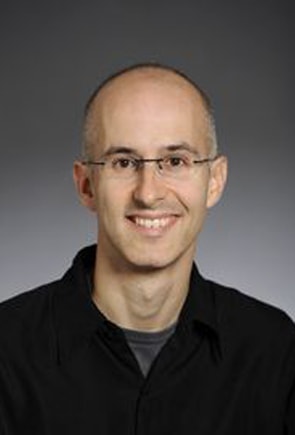
Education & Professional Experience
D. Phil.: Oxford University (U.K.), Astrophysics (1995)
B.Sc.: Imperial College (U.K.), Physics (1991)
Professor of Physics, Carnegie Mellon University, 2014–
Leverhulme Visiting Professor, Oxford University (U.K.), 2012
Indefinite Tenure, Carnegie Mellon University, 2009
Associate Professor, Carnegie Mellon University, 2004–2014
Assistant Professor, Carnegie Mellon University, 2001–2004
Post-doctoral Research: Harvard-Smithsonian Center for Astrophysics, 1998–2001
Post-doctoral Research: Ohio State University (Astrophysics), 1995–98
Research Interests
Cosmology has a "Standard Model", which includes the Big Bang, Inflation, and Dark Matter. Using this framework, Physical cosmologists are beginning to understand how structures form, how the action of gravity amplifies initially tiny perturbations, giving rise to galaxies, stars and ultimately our own planet. My research uses as a tool computer simulation codes (running on parallel computing facilities established in the Physics department) which evolve model universes forwards in time, subject to the laws of Physics which have been included: gravity, gas dynamics, radiative cooling and so on. Our analytical theories of how astrophysical processes take place can be checked with these numerical experiments, which also provide predictions to be compared with observational data.
I study the Universe both at high and low redshift, using this approach, looking at structure traced by galaxy clusters, galaxies, and intergalactic gaseous filaments seen as absorption features in the spectra of quasars. By working closely with observational astrophysicists at CMU I aim to make use of the enormous quantities of data from new telescopes, satellites and surveys. Our Universe is the ultimate physics laboratory, and these new data contain information which will constrain not only our theories of structure formation within the Universe, but also the physical processes and parameters which govern its global evolution.
Recent Publications
Collin A. Politsch et al., Trend Filtering - II. Denoising Astronomical Signals with Varying Degrees of Smoothness, MNRAS 492, 4019 (2020)
Collin A. Politsch et al., Trend Filtering - I. A Modern Statistical Tool for Time-Domain Astronomy and Astronomical Spectroscopy, MNRAS 492, 4005 (2020)
Siddharth Satpathy et al., On the possibility of Baryon Acoustic Oscillation measurements at redshift z > 7.6 with WFIRST, arXiv:2001.05183 (2020)
P. Li, S. Dodelson, R.A.C. Croft, Large Scale Structure Reconstruction with Short-Wavelength Modes, Phys. Rev. D 101, 083510 (2020)
Stephen M. Wilkins et al., Nebular Line Emission During the Epoch of Reionization, MNRAS 493, 6079 (2020)
Tom Crossland et al., Towards Machine-assisted Meta-Studies: The Hubble Constant, MNRAS 492, 3217 (2020)
Ananth Tenneti et al., A tiny host galaxy for the first giant black hole: z = 7.5 quasar in BlueTides, MNRAS 483, 1388 (2019)
Siddharth Satpathy et al., Measurement of marked correlation functions in SDSS-III Baryon Oscillation Spectroscopic Survey using LOWZ galaxies in Data Release 12, MNRAS 484, 2148 (2019)
Yueying Ni et al., Gas outflows from the z = 7.54 quasar: predictions from the BLUETIDES simulation, MNRAS 481, 4877 (2018)
Rupert A.C. Croft et al., Intensity mapping with SDSS/BOSS Lyman-α emission, quasars, and their Lyman-α forest, MNRAS 481, 1320 (2018)
More Publications:
ORCID Researcher ID